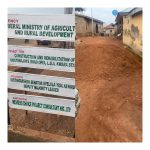In the ongoing battle against domestic violence, we often find ourselves in search of answers, solutions, and guidance. To shed light on this crucial issue, The Harbinger had an interview with Dr. Sarah Reynolds, a renowned expert in the field of domestic violence prevention. With her extensive experience and research, Dr. Reynolds provides invaluable insights into the causes of domestic violence, the steps needed for its prevention, and the resources available for those affected. Join us in this enlightening conversation, as we strive to create a world free from the shadows of domestic violence.
The Harbinger: Dr. Reynolds, thank you for joining us today. To start, could you briefly explain what domestic violence is and why it’s such a pressing concern in today’s society?
Dr. Reynolds: Domestic violence refers to a pattern of abusive behavior in a relationship where one partner seeks power and control over the other through various means, such as physical, emotional, or psychological abuse. It’s a pressing concern due to its pervasive nature, with countless individuals, often women and children, experiencing its harmful effects. The consequences are not limited to individuals but extend to communities and society as a whole, making it a critical issue to address.
The Harbinger: What are the key factors contributing to domestic violence, and how can we work towards preventing it?
Dr. Reynolds: There are multiple factors at play, including cultural norms, economic stress, and personal history. Prevention begins with education. We must teach healthy relationship skills, challenge harmful stereotypes, and provide resources for those at risk. Early intervention and support for survivors are essential. It’s not just about addressing the act but also the root causes.
The Harbinger: In your experience, what role does public policy and law play in preventing domestic violence?
Dr. Reynolds: Public policy and laws play a significant role in preventing domestic violence. They set the framework for legal consequences and support services. This includes restraining orders, funding for shelters, and initiatives to hold abusers accountable. However, there’s always room for improvement in this aspect, especially in terms of resource allocation and enforcement.
The Harbinger: For those who may be experiencing or witnessing domestic violence, what resources and organizations are available to offer help and support?
Dr. Reynolds: There are numerous resources available, including hotlines, shelters, and counseling services. National organizations like the National Domestic Violence Hotline are excellent starting points. Additionally, many local organizations and community centers offer support, including legal aid, counseling, and safe housing options. It’s essential to reach out, as there’s help available.
The Harbinger: What steps can individuals, communities, and institutions take to contribute to a safer and more compassionate society, free from domestic violence?
Dr. Reynolds: Individuals can start by educating themselves about healthy relationships, recognizing the signs of abuse, and being supportive listeners. Communities can organize awareness campaigns, create safe spaces for survivors, and encourage open dialogue. Institutions must have policies in place to address domestic violence among their employees and ensure that survivors receive the support they need.
The Harbinger: Dr. Reynolds, your insights are invaluable in our collective effort to prevent domestic violence. We thank you for your time and commitment to this vital cause.
Dr. Reynolds: Thank you for having me. It’s essential that we all work together to address domestic violence and create a safer, more empathetic society.











